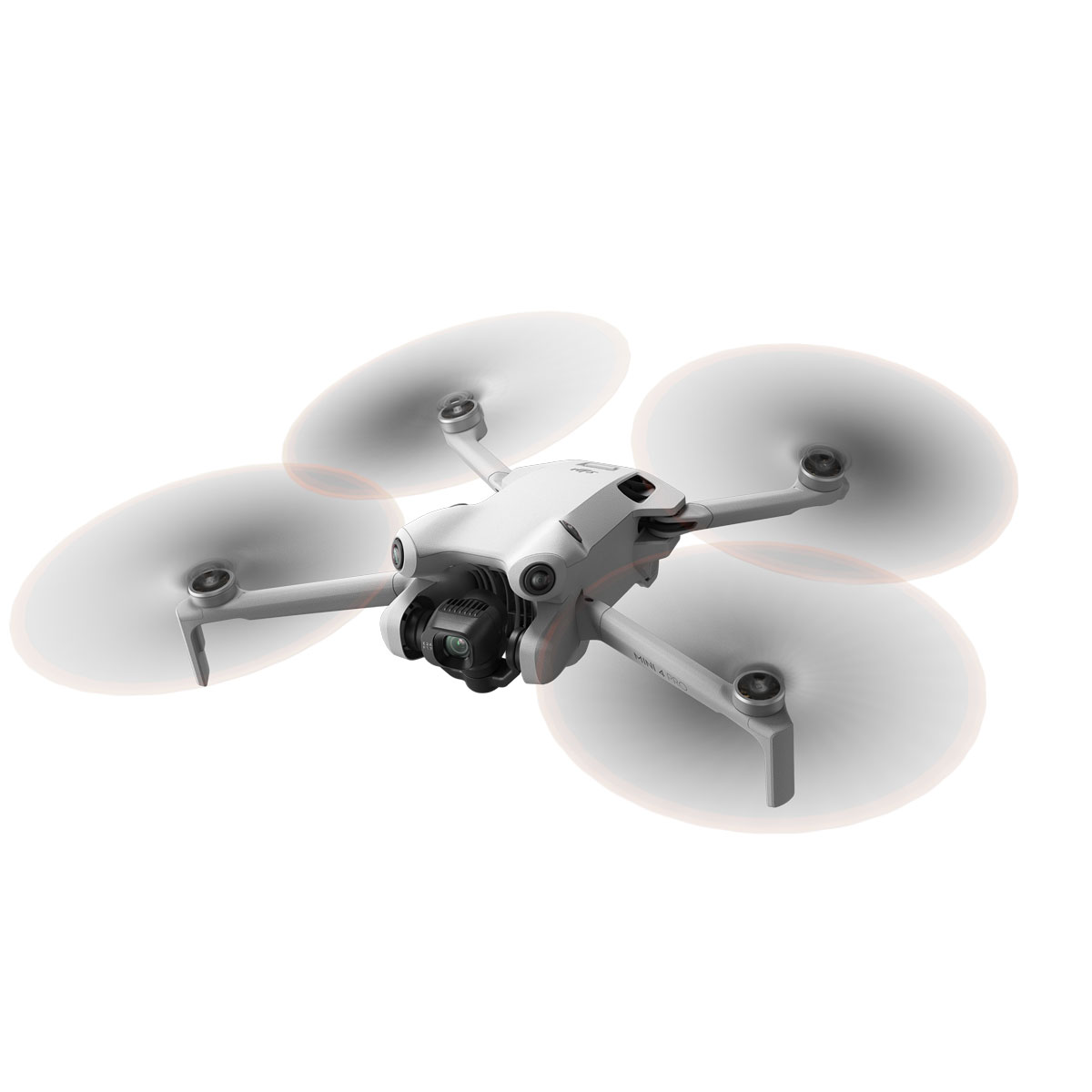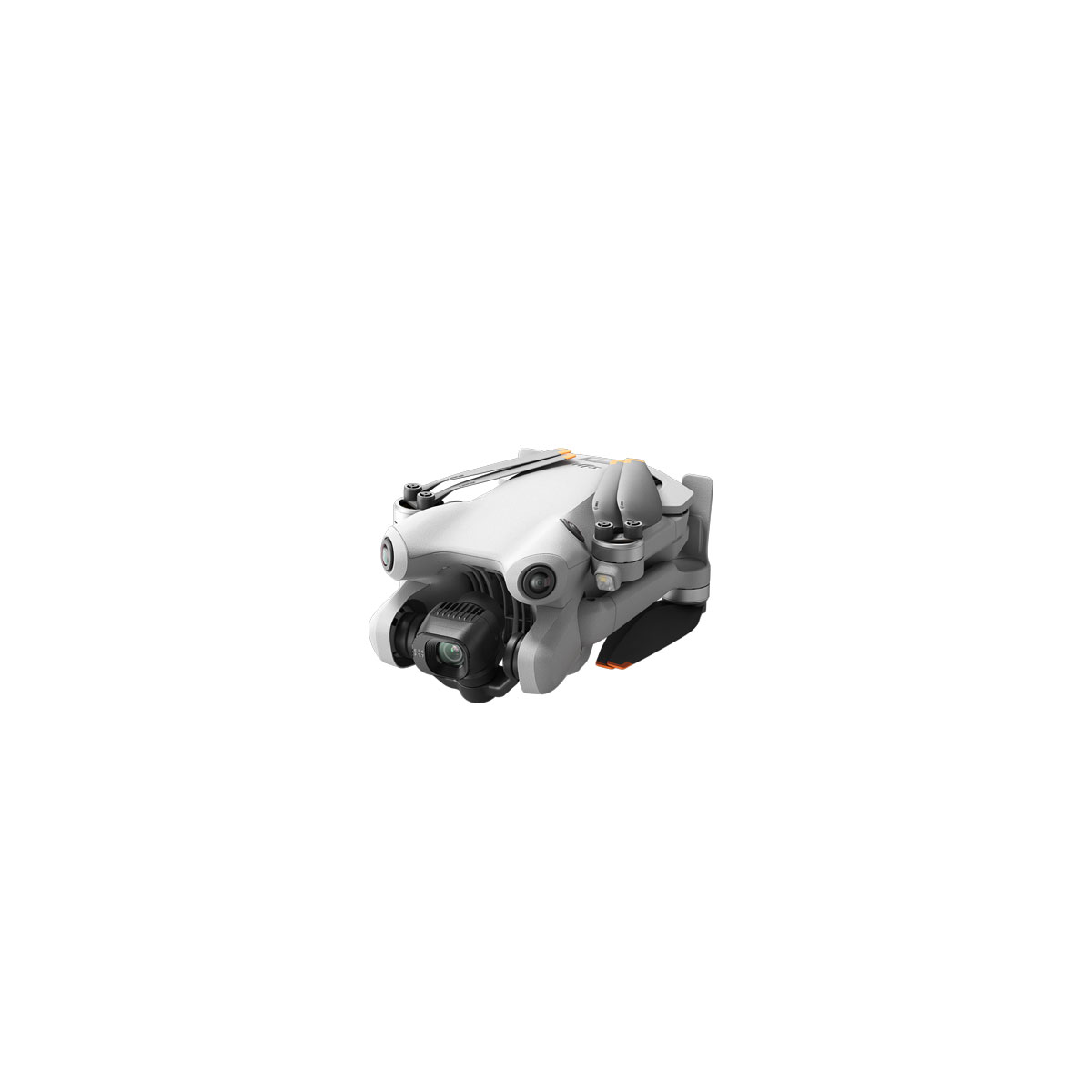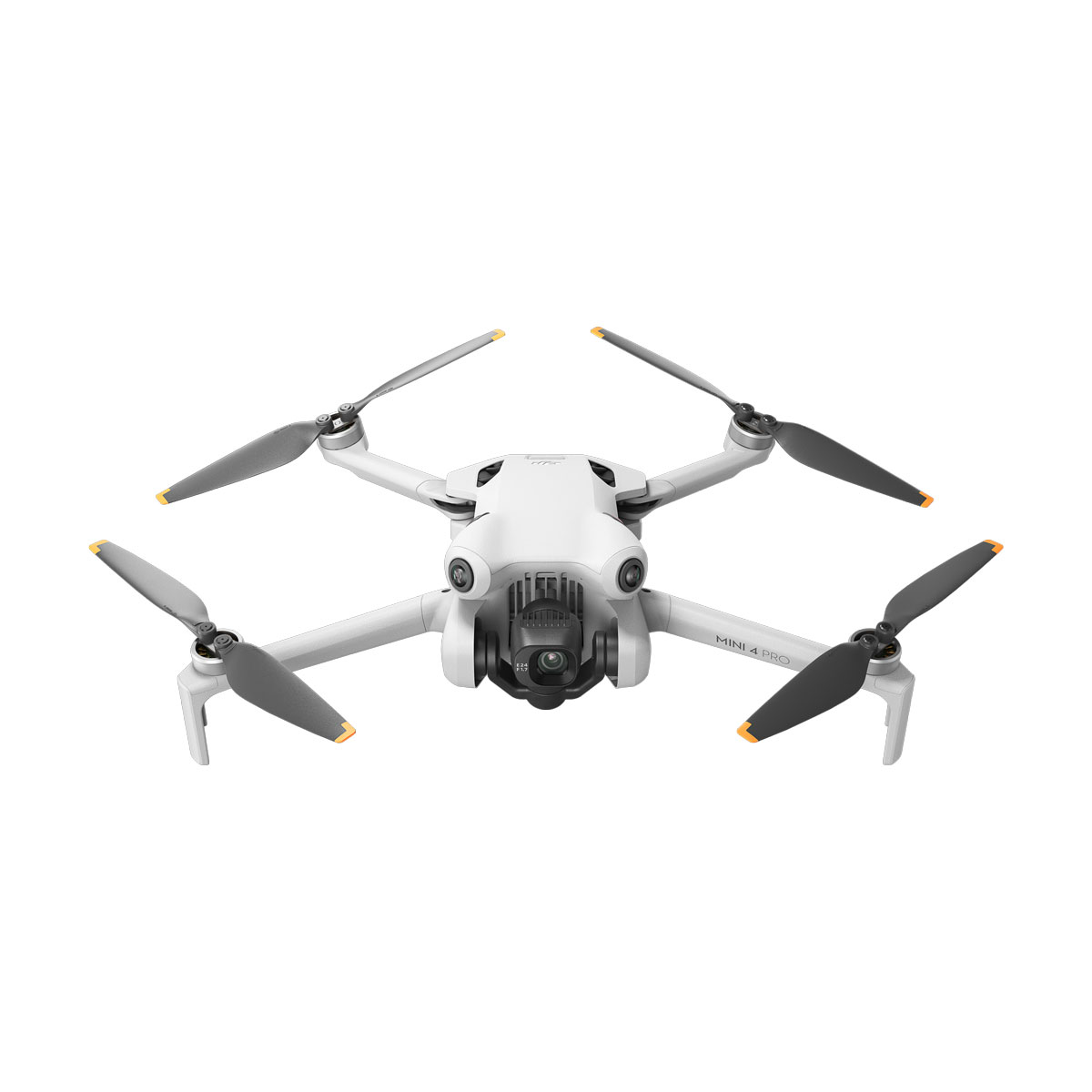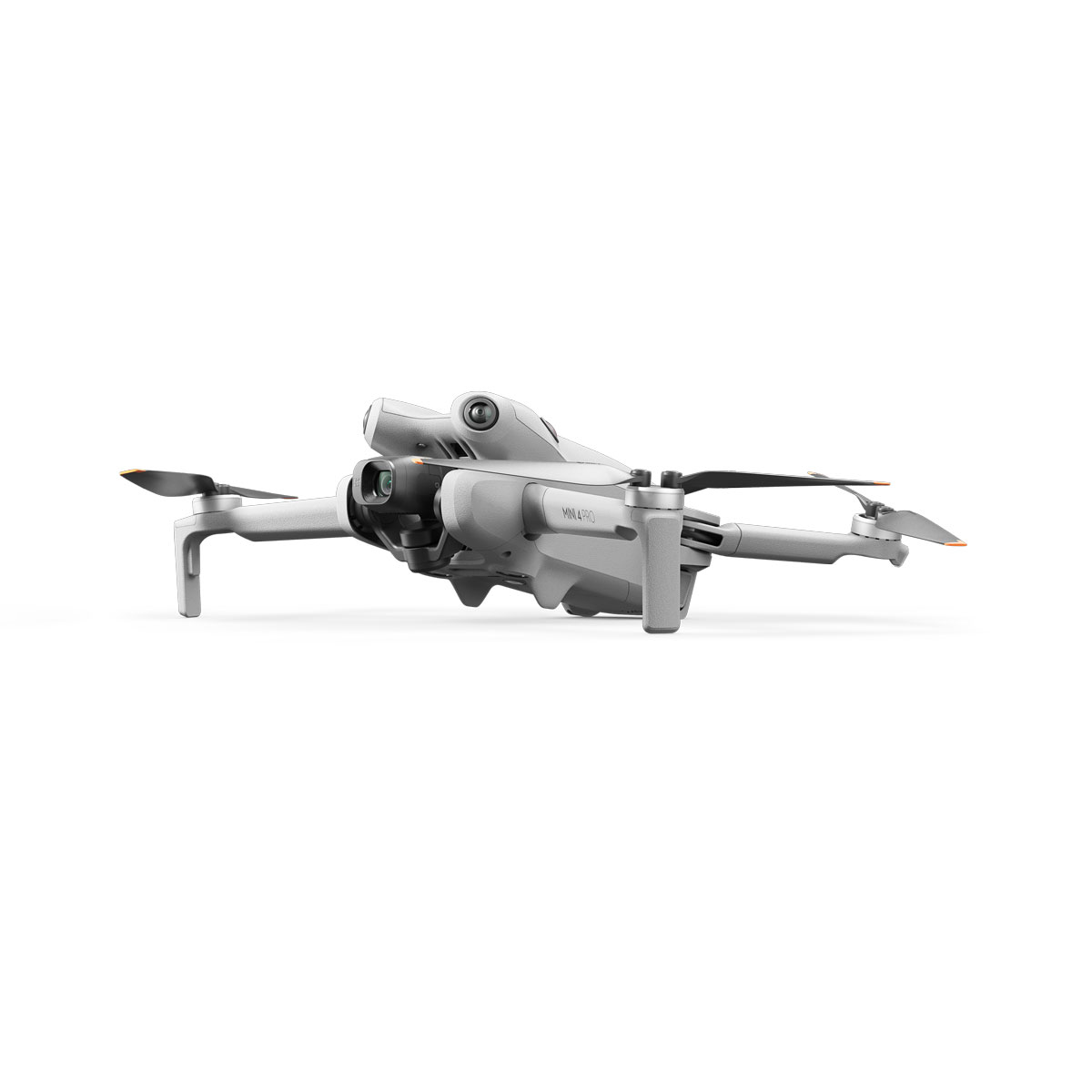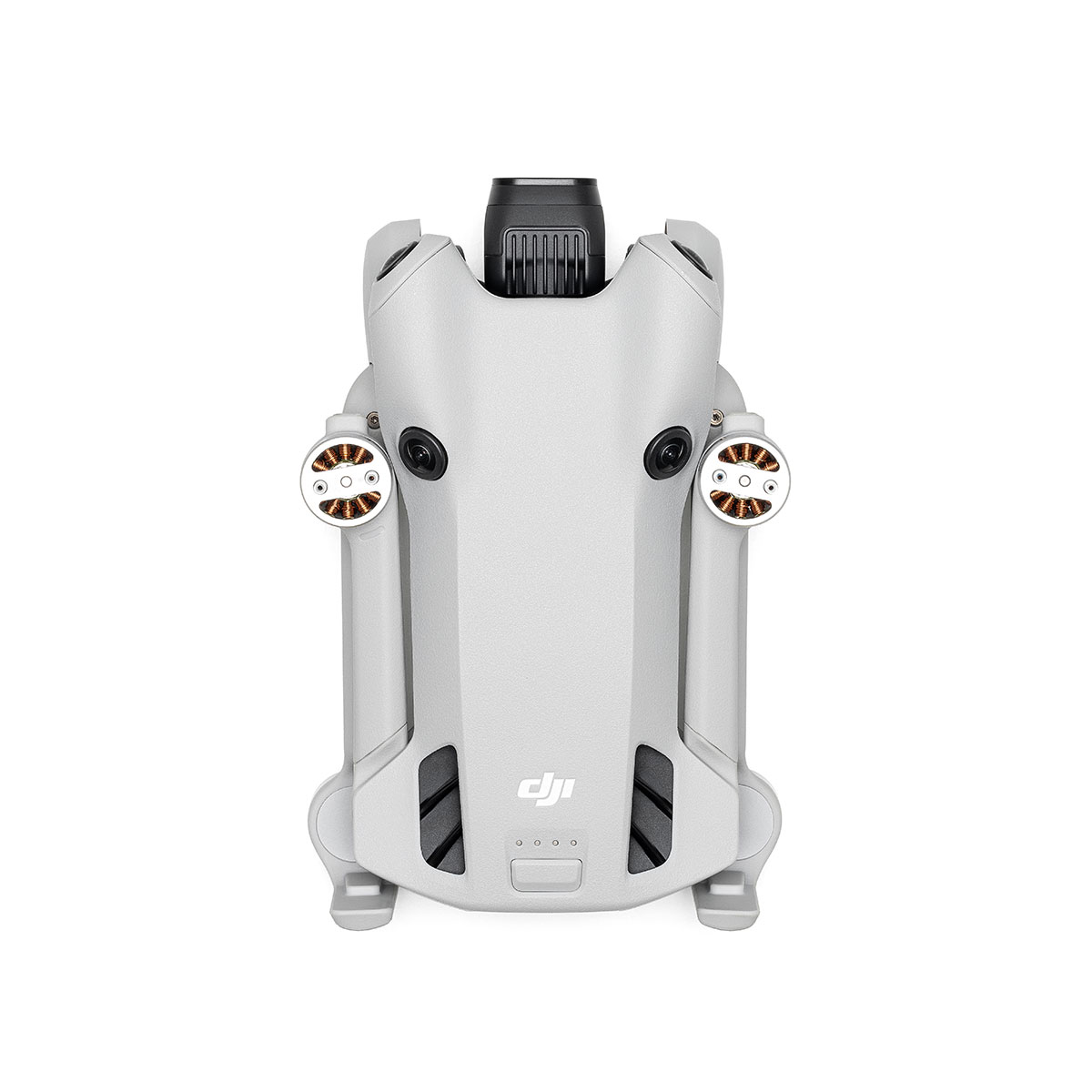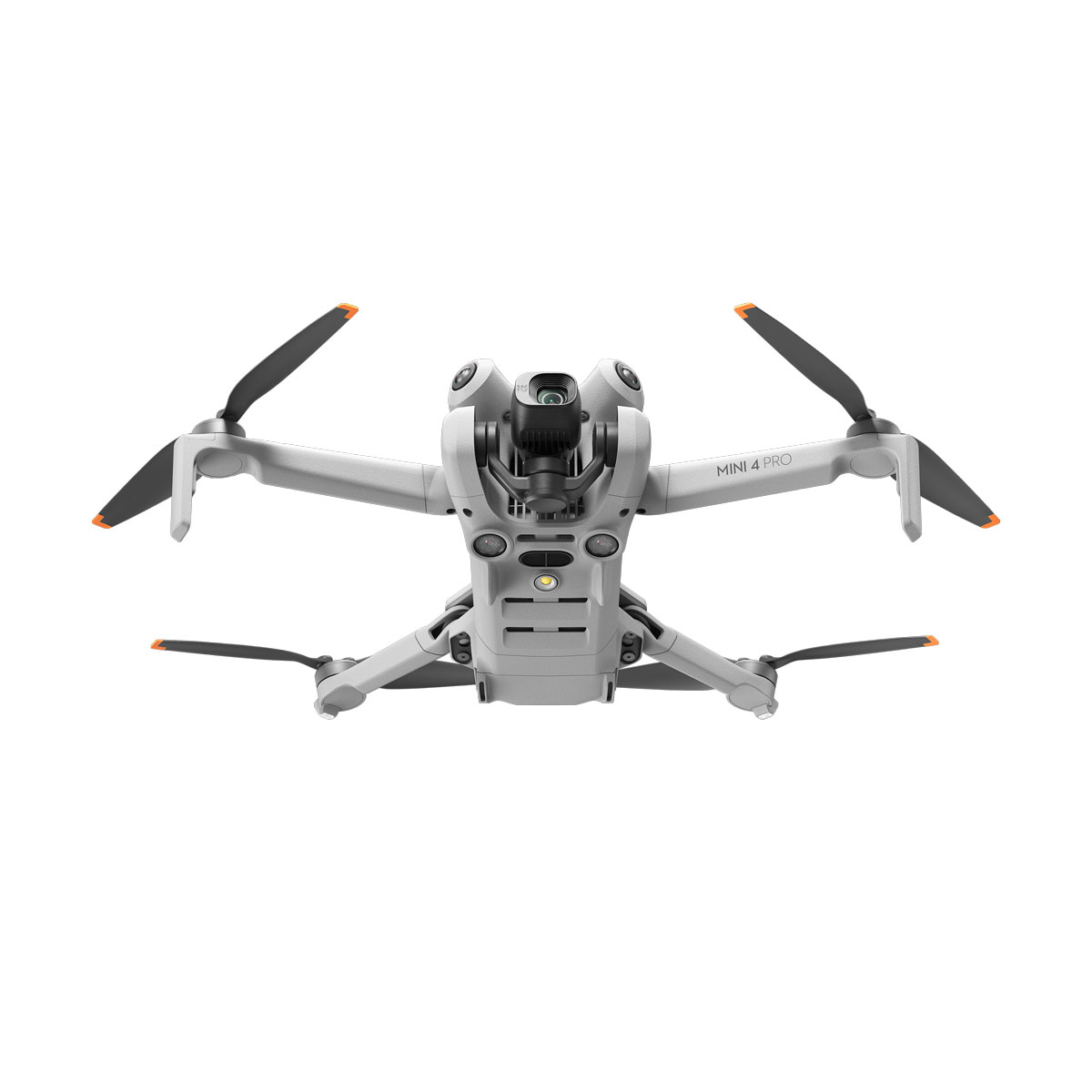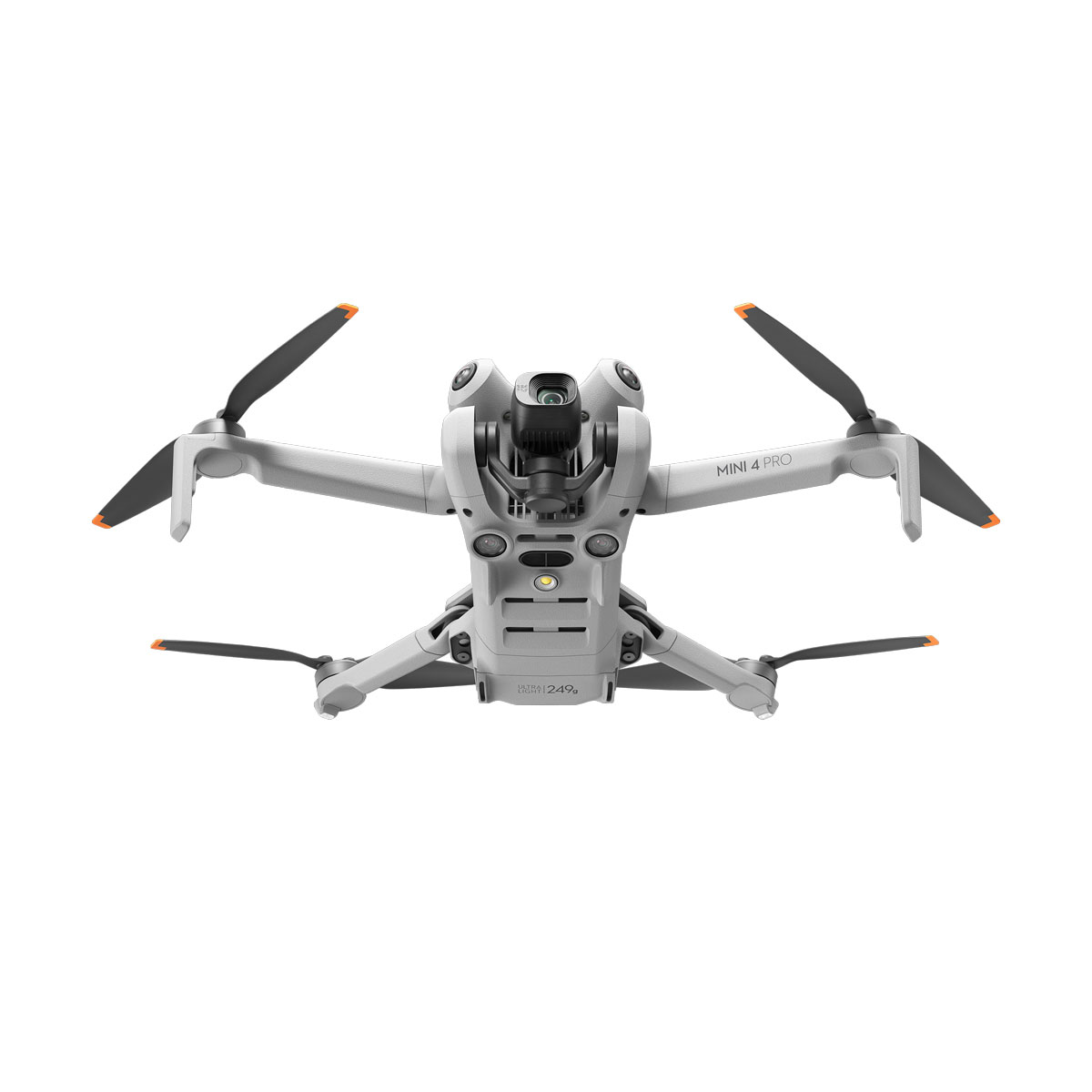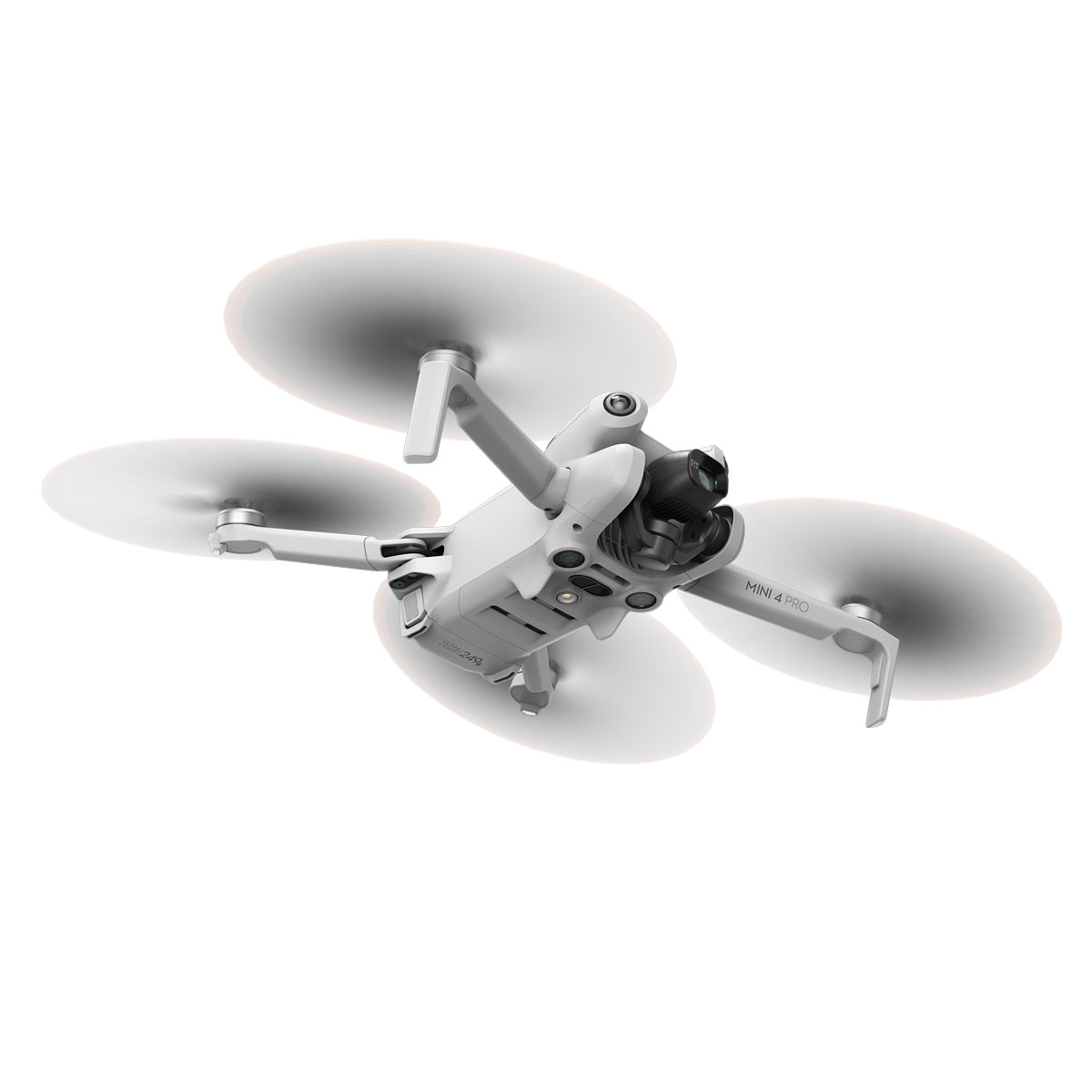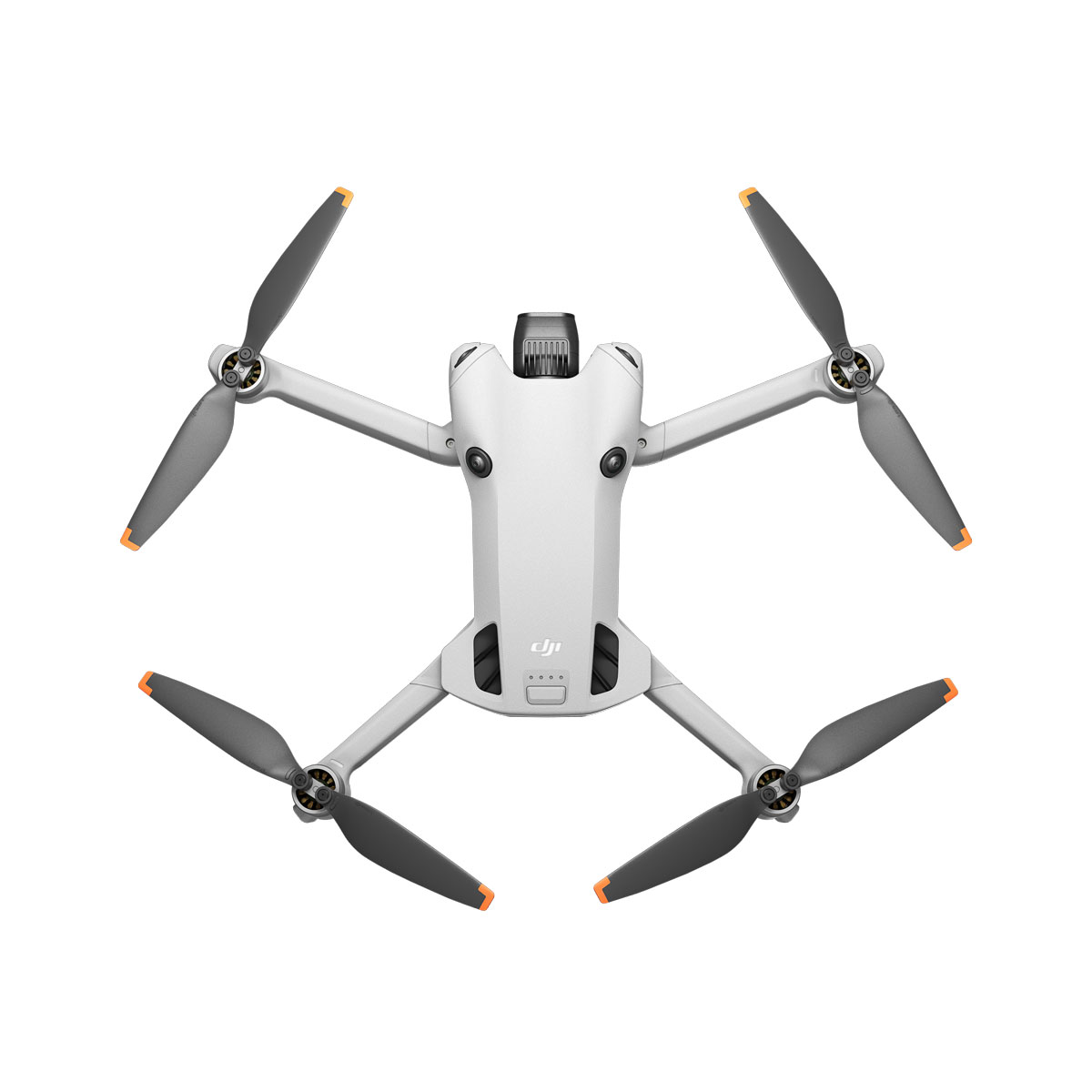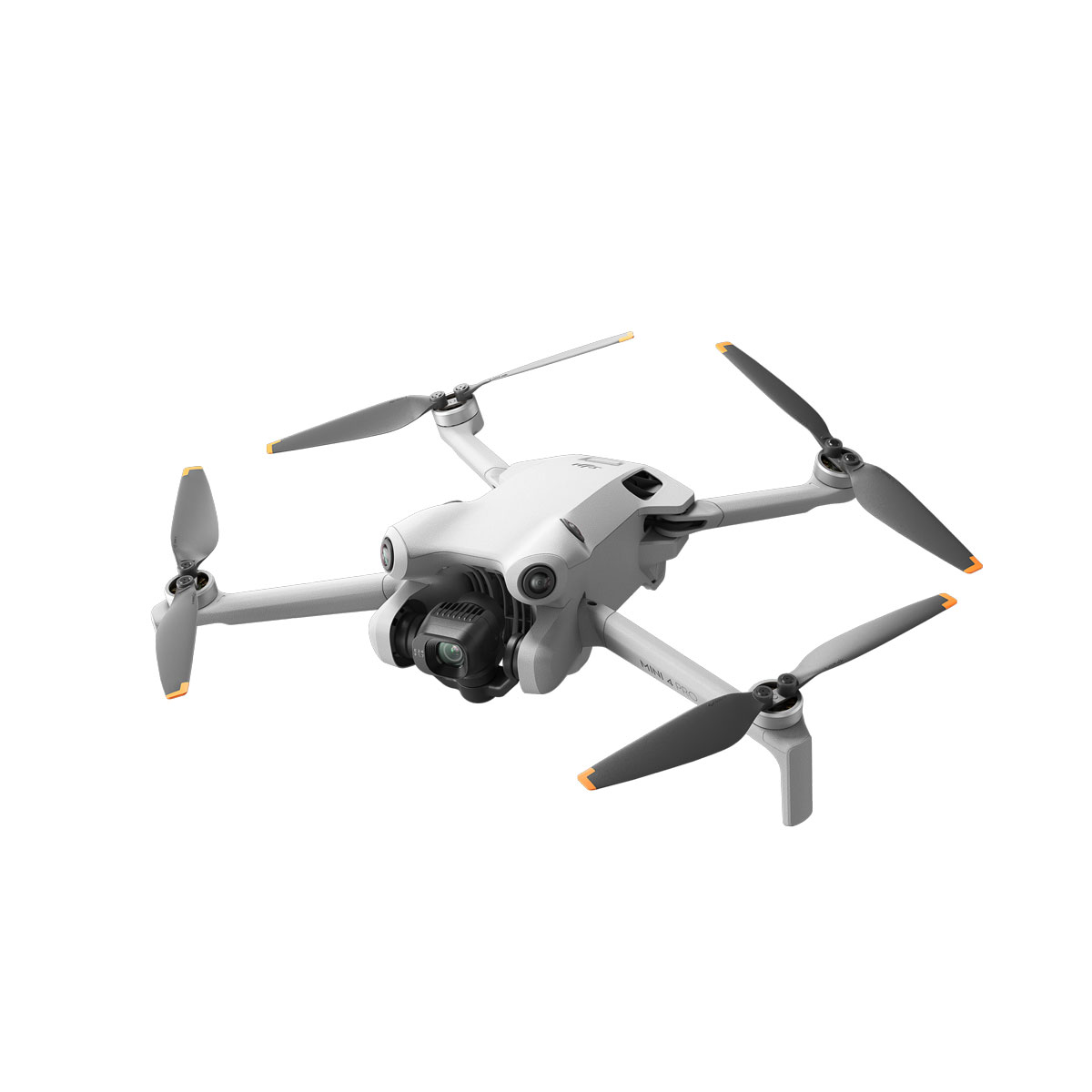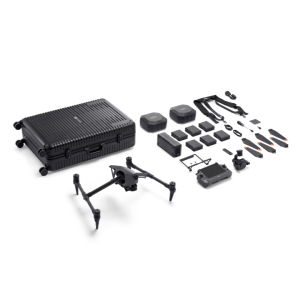DJI Mini 4 Pro
£689.00
Discover the Ultimate Mini-Camera Drone
Meet the DJI Mini 4 Pro, our most advanced mini-camera drone to date, offering six compelling features that cater to both professionals and beginners.
In stock (can be backordered)
“Maximize Your Experience with DJI Mini 4 Pro – Six Standout Features”

Lightweight Convenience
Experience Hassle-Free Flying
Weighing less than 249 g, the Mini 4 Pro is designed for on-the-go convenience. This lightweight drone eliminates the need for training or registration in most countries, making it easy to take off whenever inspiration strikes.
Outstanding Imaging Performance
Unleash Your Creative Vision
The Mini 4 Pro’s camera is equipped with a 1/1.3-inch CMOS sensor featuring Dual Native ISO Fusion, f/1.7 aperture, and 2.4μm 4-in-1 pixels. This means you can capture more intricate details with high dynamic range, ensuring exceptional results in every shot.
Intuitive Features, Enhanced Safety
Fly with Confidence
With omnidirectional obstacle sensing, the Mini 4 Pro ensures safety from all angles, thanks to its four wide-angle vision sensors and downward vision sensors. Advanced Pilot Assistance Systems (APAS) provide automatic braking and obstacle bypassing during flight, ensuring a secure and worry-free flying experience.
Effortless Creativity
Elevate Your Shots
The Mini 4 Pro offers a variety of shooting modes, including Spotlight, Point of Interest, and the innovative ActiveTrack 360°. With omnidirectional obstacle sensing, you can easily capture cinematic shots, and features like MasterShots and QuickShots help you create dynamic and stylish content effortlessly.
Extended Flight Time and Accessories
Extend Your Adventures
In Europe, the Mini 4 Pro is C0 certified and offers up to 34 minutes of flight time with the standard Intelligent Flight Battery, ensuring uninterrupted creativity without battery concerns. Explore additional accessories such as the DJI RC 2, Intelligent Flight Battery Plus, Two-Way Charging Hub, Wide-Angle Lens, ND Filters Set, and 360° Propeller Guard to enhance your flying experience.
3D and AR Previews
Visualize Your Mini 4 Pro
Get a sneak peek of the Mini 4 Pro with 3D and AR previews. Explore its design and features from every angle and even experience it in augmented reality using your iOS device.
Compared with DJI Mini 3 Pro, what has been upgraded on the DJI Mini 4 Pro?
DJI Mini 4 Pro features comprehensive upgrades in its vision sensing system, imaging system, video transmission system, and intelligent features.
Details are as follows: While maintaining a 249g lightweight design, DJI Mini 4 Pro boasts an omnidirectional vision sensing system to achieve omnidirectional obstacle sensing. It uses a new image-processing platform and supports recording 4K/60fps HDR videos, with optional 10-bit D-Log M and HLG color modes, elevating the multiple shooting specifications. It is equipped with the DJI O4 FHD digital video transmission system, which provides a max transmission distance of up to 20 km*.
It comes with the newly upgraded ActiveTrack 360°, Waypoint Flight, Advanced RTH, Cruise Control, and other intelligent features.
Data tested under FCC standard in an unobstructed environment without interference. Used for reference purposes only and provides no guarantee for actual transmission distance.
| How do I turn on DJI Mini 4 Pro after unboxing?
DJI Mini 4 Pro batteries are set to hibernation mode before shipping to ensure safe transportation. Before use, insert the battery into the aircraft or charging hub, and connect the charger to charge and activate the battery. After activating the battery, press the power button once, and then press again and hold for two seconds to turn on the aircraft. |
| How do I activate DJI Mini 4 Pro?
With DJI RC-N2: Connect your mobile device (connected to the internet) with the remote controller, and then connect to DJI Mini 4 Pro via the DJI Fly app. Follow the instructions in the app to activate DJI Mini 4 Pro. With DJI RC 2: When using DJI RC 2 for the first time, connect to the internet via Wi-Fi or a smartphone hotspot, and then follow the instructions in the DJI Fly app to activate the device. After activating DJI RC 2, connect it with DJI Mini 4 Pro via the DJI Fly app, and then follow the instructions in the app to activate the aircraft. |
| What is the wind speed resistance of DJI Mini 4 Pro?
The max wind speed resistance of DJI Mini 4 Pro is 10.7 m/s. Wind resistance is dependent upon propulsion. In strong winds, slight vibration is expected due to the drone’s lightweight nature. High-powered propulsion ensures the drone hovers stably or returns to home safely. DJI Mini 4 Pro automatically controls the gimbal to adjust slightly to ensure the footage is always stable and not affected by the wind. |
| Is DJI Mini 4 Pro waterproof?
No. Avoid contact with water during use, as it may damage the device. If it rains during the flight, return and land as soon as possible, and wait until the aircraft is fully dry inside and out before using it again. |
| What app do I need to install before using DJI Mini 4 Pro?
DJI Mini 4 Pro can only be used with the DJI Fly app. You can download the latest version of DJI Fly from the DJI Mini 4 Pro Downloads page on the official DJI website. * If you use DJI RC 2 as the remote controller, it comes with the pre-installed DJI Fly app. |
| Compared with DJI Mini 3 Pro, what are the upgrades in the camera module of DJI Mini 4 Pro?
Compared with the camera module of DJI Mini 3 Pro, DJI Mini 4 Pro has the following major upgrades: 1. A new image-processing platform is used to improve the overall imaging performance. 2. The HDR video specification has been upgraded from 4K/30fps to 4K/60fps. 3. The Slow Motion specification has been upgraded from 1080p to 4K. 4. The new 10-bit D-Log M and HLG color modes record colors and details with a high dynamic range. 5. The new Night video mode (Night Shots) delivers enhanced low-light performance. 6. The simulated long exposure (shutter speed of up to 8 s) enables more creative possibilities. 7. A next-gen SmartPhoto algorithm is adopted to effectively improve photo quality. 8. The resolution of panorama photos is higher. |
| Compared with DJI Mini 3 Pro, what has been upgraded on the DJI Mini 4 Pro?
DJI Mini 4 Pro features comprehensive upgrades in its vision sensing system, imaging system, video transmission system, and intelligent features. Details are as follows: While maintaining a 249g lightweight design, DJI Mini 4 Pro boasts an omnidirectional vision sensing system to achieve omnidirectional obstacle sensing. It uses a new image-processing platform and supports recording 4K/60fps HDR videos, with optional 10-bit D-Log M and HLG color modes, elevating the multiple shooting specifications. It is equipped with the DJI O4 FHD digital video transmission system, which provides a max transmission distance of up to 20 km*. Data tested under FCC standard in an unobstructed environment without interference. Used for reference purposes only and provides no guarantee for actual transmission distance. |
| Question | Answer |
|---|---|
| Compared with DJI Mini 3 Pro, what are the upgrades in the camera module of DJI Mini 4 Pro? | Compared with the camera module of DJI Mini 3 Pro, DJI Mini 4 Pro has the following major upgrades: 1. A new image-processing platform is used to improve the overall imaging performance. 2. The HDR video specification has been upgraded from 4K/30fps to 4K/60fps. 3. The Slow Motion specification has been upgraded from 1080p to 4K. 4. The new 10-bit D-Log M and HLG color modes record colors and details with a high dynamic range. 5. The new Night video mode (Night Shots) delivers enhanced low-light performance. 6. The simulated long exposure (shutter speed of up to 8 s) enables more creative possibilities. 7. A next-gen SmartPhoto algorithm is adopted to effectively improve photo quality. 8. The resolution of panorama photos is higher. |
| Does DJI Mini 4 Pro support manual mode for shooting photos and videos? | Yes. You can manually set camera parameters like shutter speed, ISO, and white balance in the DJI Fly app. |
| How do I enable HDR mode on DJI Mini 4 Pro? | When recording video at 60fps or lower, DJI Mini 4 Pro enables HDR mode by default. |
| How does the dual native ISO fusion technology of DJI Mini 4 Pro work? | Photo mode and video mode (60fps and lower): The sensor will algorithmically integrate the images gained by the two sets of analog amplifier circuits for a better dynamic range of actual imaging. |
| How often do I need to replace the DJI Mini 4 Pro propellers? How can I replace the propellers? | Before each flight, it is necessary to check the propellers for cracks, wear, warp, corrosion, and loose screws. If any of these conditions are present, the propellers should be replaced. Follow the instructions in the user manual to replace the propellers. Use the included screwdriver to replace the propellers. Please follow the instructions provided. Remove the two blades and screws from the motor, and replace with the new propellers and screws. Attach the marked propellers to the marked motors, and the unmarked propellers to the unmarked motors. Ensure that the propellers and motors are installed securely before each flight. |
| Can I use other USB-C chargers to charge DJI Mini 4 Pro? | Yes. To ensure charging speed, it is recommended to use the DJI 30W USB-C Charger or other USB Power Delivery chargers. |
| What are the functions of the Two-Way Charging Hub? | The Two-Way Charging Hub supports USB PD fast-charging protocols, and can charge up to three batteries in sequence. You can also use it for battery storage or as a power bank (storing at least one battery with ample power) to charge your mobile device or remote controller via the USB-A port. |
| What remote controllers are compatible with DJI Mini 4 Pro? | DJI Mini 4 Pro currently supports two remote controllers: DJI RC-N2 and DJI RC 2. |
| Compared with DJI RC-N1, what are the upgrades of DJI RC-N2? | The video transmission solution has been upgraded, and the antenna system has been upgraded from 1T2R to 2T2R. With DJI Mini 4 Pro, the O4 video transmission can be used. |
| How do I share footage from DJI RC 2 to a smartphone? | DJI RC 2 focuses on your flight and control experience. For footage management and video sharing, it is recommended to install the DJI Fly app on your smartphone and connect it directly with the aircraft through Wi-Fi. Then, you can use the QuickTransfer feature to download footage directly from the aircraft to your smartphone. |
| Compared with DJI RC, what are the upgrades of DJI RC 2? | The performance of the processor has been improved for smoother operation. The video transmission system has been upgraded, and the antenna system has been upgraded from 1T2R to 2T4R. With DJI Mini 4 Pro, the O4 video transmission can be used. DJI RC 2 features two built-in antennas and two external antennas, and also supports manual angle adjustments for the two external antennas to achieve better video transmission effects. |
| Does DJI RC 2 support quick charging? | Yes. The USB-C port supports up to 9V/3A power input (with a 9V/3A charger). It takes 1.5 hours at the fastest speed to fully charge the battery. |
| How do I adjust the antennas of DJI RC 2? | The optimal transmission range occurs when the antennas are facing the aircraft, with the angle between the antennas and the back of the remote controller at 180° or 270°. |
| How do I customize button functions of DJI RC 2? | You can customize the C1/C2 button of DJI RC 2 in the DJI Fly app for more convenient control. |
| Does DJI RC 2 support installing third-party apps? | No. |
| Does the max transmission distance of the O4 video transmission system vary according to the interference level of the environment? | “In different environments, the wireless interference level is different, and the max transmission distance will vary. Unobstructed: Strong Interference: urban landscape, approx. 1.5-4 km Medium Interference: suburban landscape, approx. 4-10 km Low Interference: suburb/seaside, approx. 10-20 km Obstructed: Low Interference and Obstructed by Buildings: approx. 0-0.5 km Low Interference and Obstructed by Trees: approx. 0.5-3 km Data tested under FCC standard in obstructed or unobstructed environments with typical interference. Used for reference purposes only and provides no guarantee for actual transmission distance. “ |
| Compared with the O3 video transmission system, what are the upgrades of the O4 video transmission system? | “The O4 video transmission system adopts an all-new hardware solution, and a new frequency band* has been added. The communication algorithm has also been upgraded, which not only delivers an FHD video transmission from a max range of 20 km**, but also features enhanced anti-interference capabilities, further improving the transmission stability in complex environments like urban settings. The remote controller also supports a 1080p/60fps max real-time live feed, with the higher frame rate delivering a smoother viewing experience. * Can be used only in countries and regions where it is allowed by local laws and regulations. ** Measured in an outdoor, open environment, without interference, and with FCC compliance. The above data shows the farthest communication range for one-way, non-return flights. Always pay attention to reminders in the app during your flight. “ |
| How do I update the firmware of DJI Mini 4 Pro? | Connect the aircraft with the remote controller. The DJI Fly app will send you a prompt for firmware updates (if new firmware is available). Follow the instructions to update the firmware of the aircraft, remote controller, battery, and other modules. |
| What factors can lead to an update failure? | “1. The battery level of the aircraft or remote controller is below 20%. 2. The aircraft or remote controller is powered off during an update. If this happens, restart the aircraft and remote controller, and try again. 3. The network is disconnected during a firmware download. 4. Your smartphone interface is switched to other apps during a firmware download. The aircraft will restart multiple times during an update and automatically power off after completing the update.“ |
| What DJI Mini 3 Pro accessories can be used with DJI Mini 4 Pro? | “DJI Mini 4 Pro is compatible with the DJI 30W USB-C Charger, DJI 18W USB Charger, DJI Mini 3 Pro Intelligent Flight Battery Plus*, and DJI Mini 3 Pro Two-Way Charging Hub. For details, please check the product compatibility list of the corresponding accessories at the official online DJI Store.* The Intelligent Flight Battery Plus is not sold in Europe.“ |
| Feature | Description | Scenario |
|---|---|---|
| Intelligent Flight Battery | Add a upgraded battery. Meets the shooting needs of most users during one-day travel and enables more opportunities to explore, allowing them to enjoy free creation without low-battery anxiety. * the aircraft will weigh more than 249 g with an Intelligent Flight Battery Plus. | Scenario 1: Longer flight time provides users with more flexibility to explore and prepare. They can try different camera positions or take some shots in advance and compare. This allows them to enjoy aerial photography fully. Scenario 2: Longer battery life can also reduce the low-battery anxiety of users and help them fly more confidently. |
| ActiveTrack (upgrades) (ActiveTrack new feature) Trace Mode -Touch Trace |
Customizable tracking camera movement – Users can set the drone to follow a certain flight route during the tracking process (the previous version only supported fixing in a certain direction), achieving freer and more diverse tracking routes. | In scenarios like biking/roaming/skateboarding/car tracking, it provides more stable tracking routes and customizable flight routes to achieve tracking effects like circling and spiraling. |
| FocusTrack | Spotlight Point of Interest ActiveTrack (Trace/Parallel) | When the battery is low, it allows the drone to complete RTH faster and save more power. Scenario 2: It avoids the problem that the drone stops flying when encountering Altitude Zones during Straight Line RTH |
| Advanced RTH | Supports obstacle avoidance and bypassing. During the flight, the drone can scan its surroundings globally, implement internal mapping, and plan the optimal route back to its home point, including power-saving RTH and original RTH. It is faster, more power-efficient, and safer when the battery level is low. * This feature is unavailable when the vision-sensing system is disabled. | When the battery is low, it allows the drone to complete RTH faster and save more power. Scenario 2: It avoids the problem that the drone stops flying when encountering Altitude Zones during Straight Line RTH. |
| Waypoint Flight | Users can preset several points, and the drone will automatically fly along them. The drone can also perform preset and highly customizable actions during the flight. Users can also save flight routes for repeated flights. | Useful for one-takes. For some complex camera movements, users can use this function first for composing the idea and then perform automatic flight to create smooth footage. |
| Cruise Control | Press the shortcut button to lock the speed (based on how hard you are pushing the control stick at that moment). Once locked, there is no need to continue pushing the sticks; the locked movement will continue. During the long-distance flight, this locks the speed/direction without requiring continued control stick movement or usage. Additionally, users can manually adjust the speed or direction at any time. | Locking the flight speed and direction produces smoother footage when shooting orbit footage. Meanwhile, users can increase the throttle to fly upward in a spiral. |
| Hyperlapse | Feature upgrades (compared with the previous generation): 1. Time limit is canceled so that users can keep shooting. 2. Supports compositing while shooting, which greatly shortens the output time. Shooting modes: Free/Waypoint/Circle/Course Lock | Busy traffic/tall buildings/day-to-night transition and other scenarios suitable for shooting timelapse footage. |
| MasterShots | Compatible with the three sub-modes of MasterShots: Portrait/Proximity/Landscape. It can be used when users need more confidence in camera movements or running out of ideas. It can help them shoot high-quality video materials more easily and quickly. After automatic editing and soundtrack adding in the app, videos can be created in minutes and directly shared with friends. | Scenario 1: Beginner users are unfamiliar with camera movements, while QuickShots can help them produce stunning footage quickly and effortlessly. Scenario 2: For users adept at camera movements, QuickShots provides efficient camera movements to help execute ideas more quickly and efficiently. Scenario 3: When beginner users want to capture the beauty of a scenic spot, MasterShots can automatically plan a flight route and perform camera movements to generate cinematic footage, which makes them willing to share with others and thus enjoy a sense of achievement. Scenario 4: Scenarios like mountains/buildings/grasslands allow users to quickly obtain spectacular photos worth sharing. |
| QuickShots | Dronie/Circle/Helix/Rocket/Boomerang/Asteroid | Scenario 1: Longer flight time provides users with more flexibility to explore and prepare. They can try different camera positions or take some shots in advance and compare. This allows them to enjoy aerial photography fully. Scenario 2: Longer battery life can also reduce the low-battery anxiety of users and help them fly more confidently. |
| Digital Zoom | Video:4K: up to 2x 1080p: up to 4x Photo: 12 MP: up to 2x | When capturing close shots of human subjects, the drone does not need to fly closely. Scenario 2: Provides more variations for the footage. |
| Panorama | 180°/Wide Angle/Sphere/Vertical Advantages: 1. Panorama photos in 180°/Sphere mode are up to 100 MP. Although the resolution of Wide Angle/Vertical mode does not reach 100 MP, it has also been greatly improved when compared with Mini 3 Pro (Mini 3 Pro uses subsampled technology, and the resolution of panorama photos is relatively low). 2. By incorporating a tilt shooting angle into the lens configuration, panorama photos can enhance sky effects greatly. Users do not need to manually capture the sky in the tilt angle to complete the panorama. | |
| QuickTransfer | Supports Wi-Fi downloading at a faster download speed (max 30 MB/s). You can enable Wi-Fi downloading without connecting to the remote controller. Easy and fast, put a powered-on drone close to your phone to pair up. | The waiting time is shorter when users download photos/videos. |
Please note you must add the RC2 additionally to the fly more kit if required.
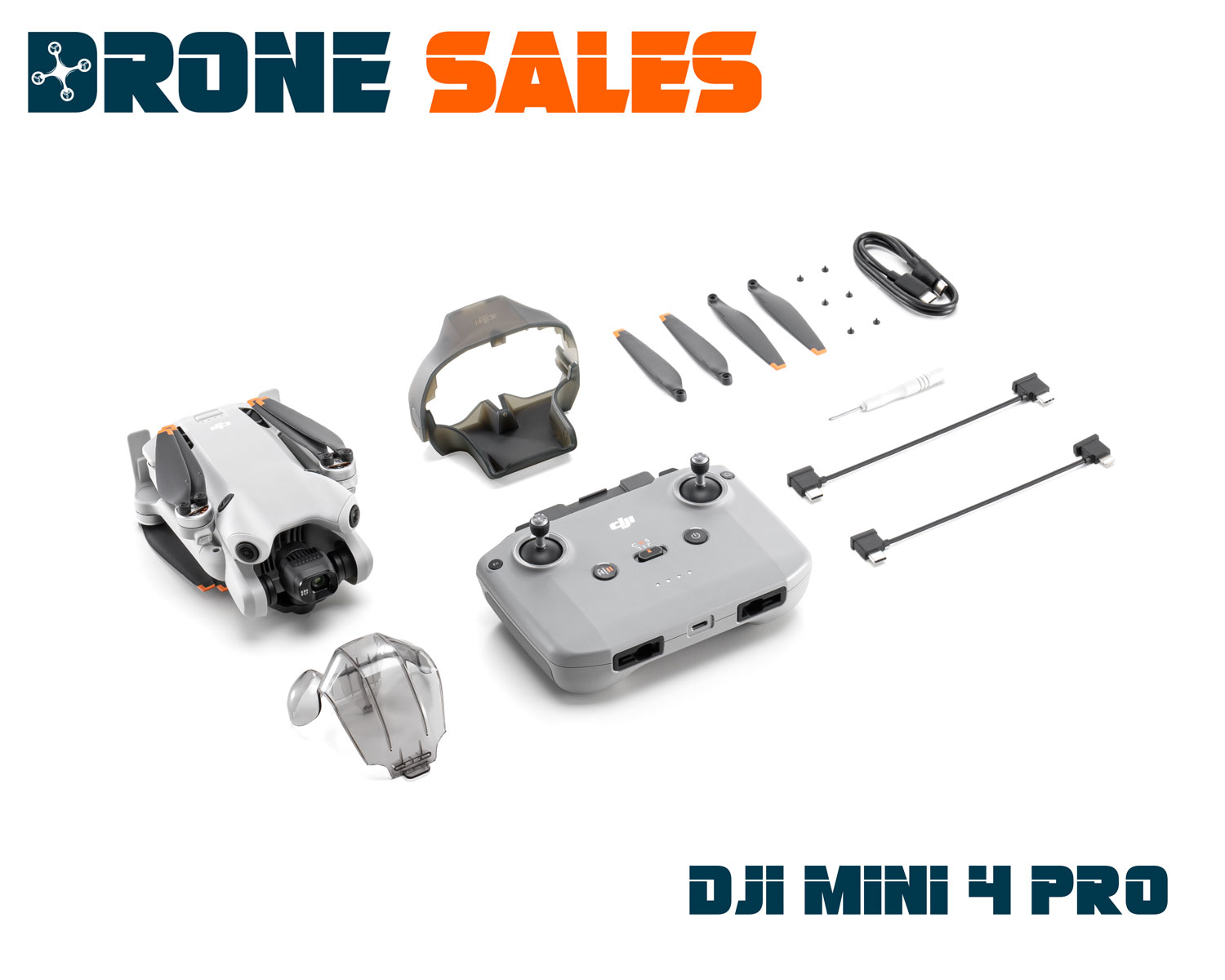
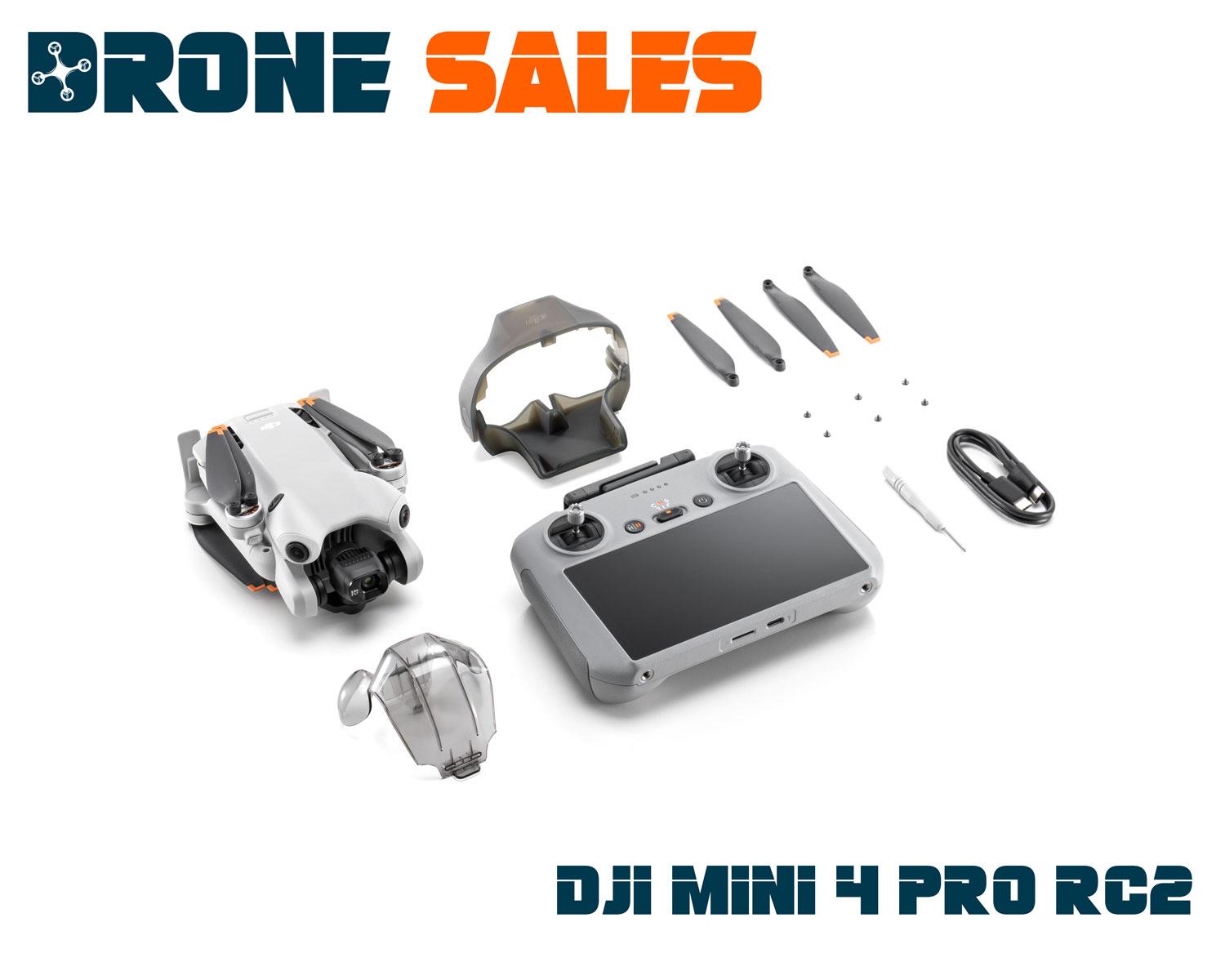
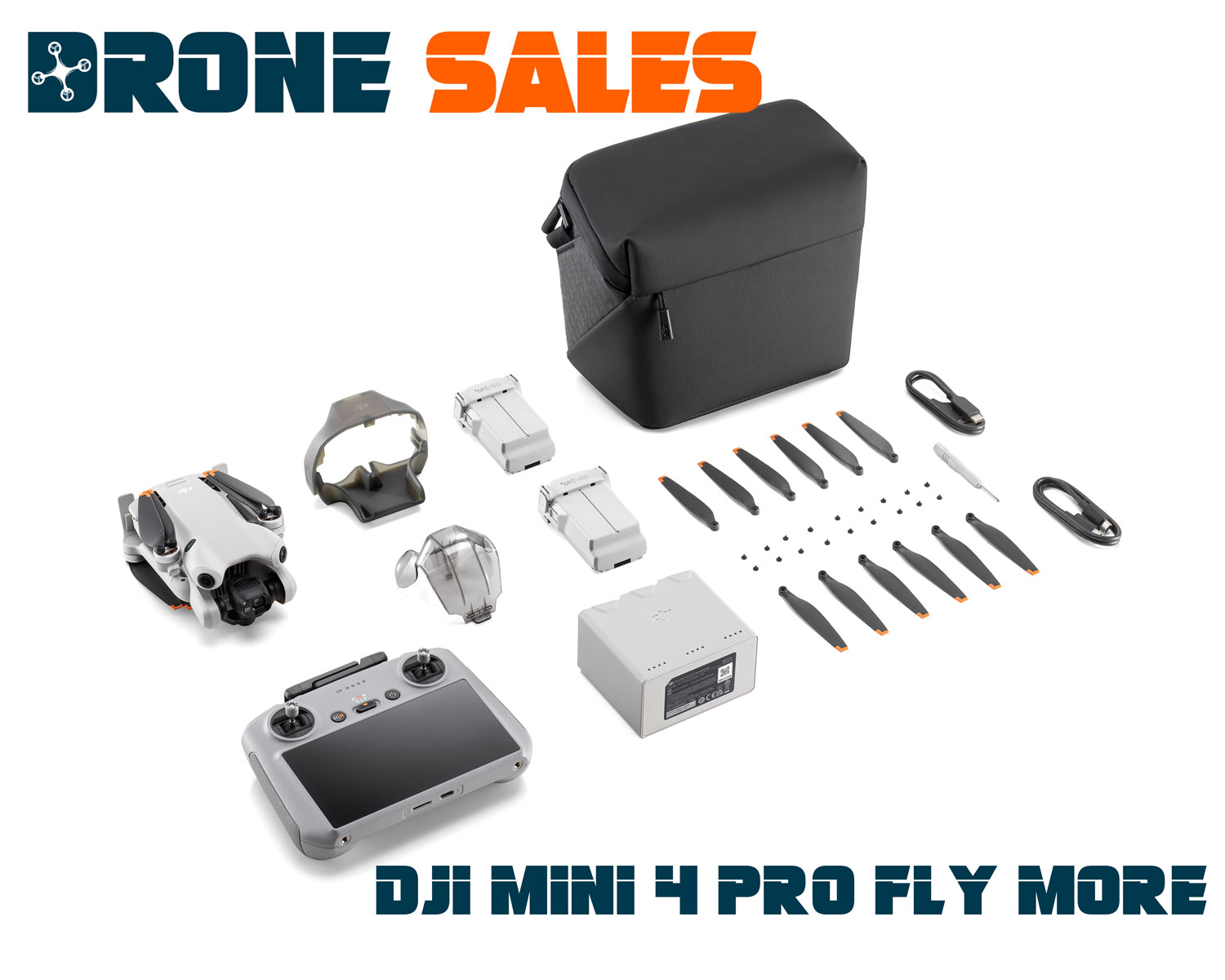
View The Comprehensive Spec Sheet Here
| Hero | Feature | Description | Scenario |
|---|---|---|---|
| Lightweight, Portable, Regulation-Friendly | Under 249 g and Foldable | An ultra-light, foldable drone that weighs less than 249 g. | When users want to pack light for travel or a weekend getaway, the compact and lightweight 140 can slip into their bags for easy carrying. |
| – | Regulation-Friendly | Europe: The user pain point regarding the new C0 regulations is addressed. No exam or training is required. US: No registration required. China: No registration is required. |
When traveling to most countries and regions, users do not need to register or take exams for 140, saving time and effort from having to read and prep for tests about local drone laws and regulations. |
| Safe and Reliable | Flagship DJI O4 Video Transmission | Live view quality: 1080p/60fps Max video transmission distance: 20 km (FCC); 8 km (CE/SRRC/MIC) | Scenario 1: In urban environments with substantial signal interference, 140 can deliver more stable signals to reduce stuttering and frame drops during video transmission compared to the previous generation. When filming around a building, at low altitudes, or through different obstructions, users can enjoy a better operating experience. Scenario 2: The 60fps video transmission frame rate enables a smoother live view. The lower latency delivers a faster and more responsive operation experience. |
| – | Omnidirectional Vision Sensing | Equipped with four fisheye vision sensors, downward binocular vision sensors, a 3D ToF sensor, and an auxiliary light, 140 is the first 249g drone that achieves omnidirectional vision sensing, allowing users to control sideways flight or use MasterShots and other intelligent features in complex environments like urban buildings with more peace of mind. * Unable to identify small obstacles like tree branches and electric wires; unavailable at night. | Scenario 1: Beginner-friendly: it can reduce the risk of hitting obstacles and the anxiety of crashing the drone. Scenario 2: The drone can automatically identify and bypass most obstacles, allowing creators to focus more on video shooting while flying in complex environments like buildings/residential areas. |
| – | Advanced Pilot Assistance Systems (APAS) | According to the control stick input and surrounding obstacle information, the drone can quickly identify and smoothly bypass obstacles in all directions (forward/backward/upward/downward/left/right) during flight. Even in relatively complex environments, smooth footage can be captured, and creation is no longer restricted. | |
| – | Bottom Auxiliary Light | Hovering at low altitudes at night is more stable. | It can reduce the crashing caused by uneven landing grounds or direct landing without seeing the ground clearly. |
| High Image Quality | High-Quality Imaging System: 1/1.3-inch Sensor f/1.7 Aperture 2.4μm (4-in-1) Large Pixel Dual Native ISO Integration |
In the case of the same pixel count, a larger camera sensor size indicates a larger area per pixel, and each pixel is capable of capturing more light, which leads to higher image resolution. | Scenario 1 (sunset): 140 performs well when capturing high-contrast sunset scenes, and the dynamic range is higher than that of Mini 3 Pro. Scenario 2 (night): The highlight recovery performance is better, so neon/street lights are challenging to overexpose. The ISO is improved, and the image brightness is significantly improved. Meanwhile, the blurry feeling is reduced, and more details are retained. Scenario 3: Beginners or users who do not want to edit can get raw footage with great color and adequate dynamic range. |
| – | 4K/60fps HDR Video (DCG) | Integrates the images gained by dual analog amplifier circuits to improve the dynamic range effectively and supports the frame rate of 60fps and below.Thanks to the ISP upgrade, 140 performs better than Mini 3 Pro in scenarios like sunsets and night views, comparable to Air 3. | |
| – | Next-Gen SmartPhoto | Based on the previous generation of HDR, this generation of SmartPhoto selects different stack methods like HDR/Hyperlight to adjust and optimize parameters specifically for the scene to obtain photos with higher dynamic range (elevated up to 5 stops) and achieve the effect of simulated long exposure. The photodynamic range is targeted to be the same as that of the iPhone 14 Pro. | |
| – | Night Mode | Adopts a multi-scale noise reduction algorithm to suppress noise for cleaner shots effectively. | Night shots are cleaner with less noise. |
| – | 4K/100fps Slow Motion | Higher resolution improves video clarity. A higher frame rate facilitates smoother videos. | Scenario 1: It provides users with greater cropping space and slow-motion performance in post-production to improve image quality and post-production flexibility, allowing for a better creative experience. Scenario 2: Sports scenarios like running/biking/skiing/snowboarding/skateboarding; motion close-ups like animals/children running; car/off-road vehicle driving; dynamic landscapes like waterfalls/wheat waves, etc. |
| – | Color Modes: 10-bit D-Log M HLG |
10-bit D-Log M (retains highlight and shadow details, enabling more flexible post-production). HLG (industry HDR standard, adaptive to Rec.709/BT.2020 color space). | Scenario 1: Creators often use Log color modes during shooting. This feature helps retain more image details to improve image quality. Moreover, the color grading of D-Log M is easier than that of D-Log. Scenario 2: Compared with D-Log or RAW, HLG can retain a high dynamic range while reducing operating difficulty. Mainstream editing software can automatically convert HLG to standard colors, based on which creators can directly perform color grading for more convenient post-production. |
| – | Large-Angle Tilt | Supports large-angle tilt to enable more creative possibilities. Won’t reach the limit easily under heavy winds. | Scenario 1: Smaller gimbal limit, no bumping down to the limit against heavy winds. Scenario 2: Larger gimbal tilt angle for more creative possibilities. It presents footage with the sky as a pure background and even as smooth as using a jib on the ground. |
| – | Sharpness/Noise Reduction Stylized Adjustment | Supports customizing the video sharpness/noise reduction level (not available in Night mode). | Users can customize the imaging style without post-production. |
| – | True Vertical Shooting | True vertical shooting is achieved by rotating the roll axis of the gimbal. | Users can shoot vertical videos that spread the entire screen on social media without cropping and retain the original image quality. Scenario 2: Users can better capture vertical scenes like skyscrapers, waterfalls, and heavy traffic. |



